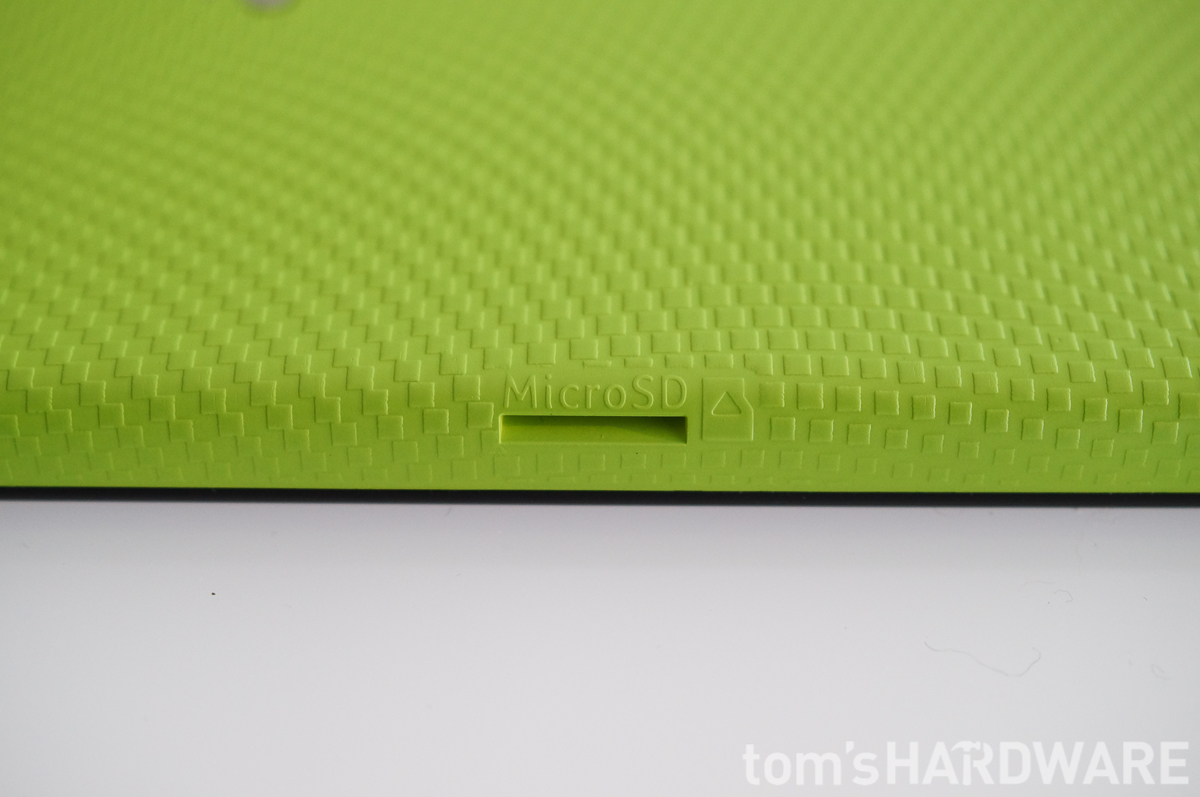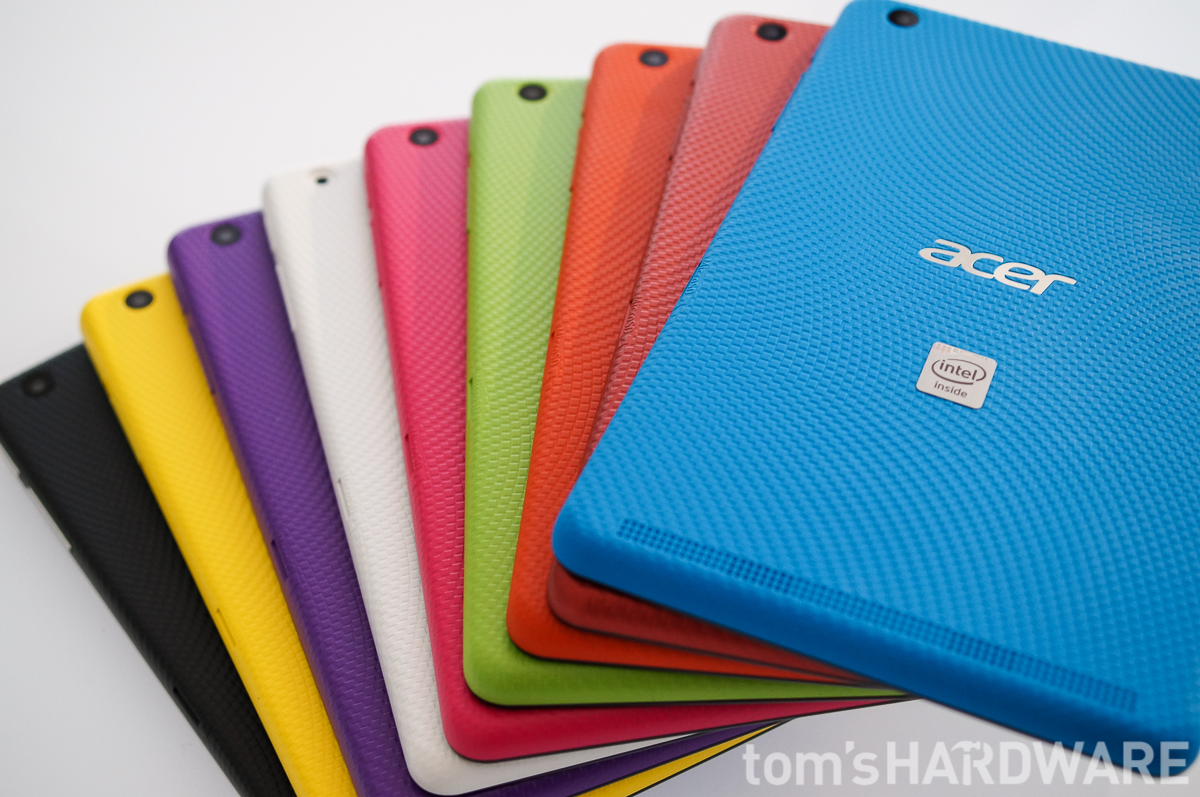Acer Iconia One 7 Budget Android Tablet is Intel Powered
At today's Acer "A Touch More Connected" event in New York City, the Intel-powered 7-inch One 7 was revealed in almost every color under the sun.
Most entry-level Android tablets make too many compromises to recommend to anyone except those on the strictest of budgets, but it looks like Acer, with the new Iconia One 7, has a cheap Android tablet that we may actually be able to endorse.
The Iconia One 7 is powered by Intel's 1.6 GHz dual-core Atom Z2560 SoC. It isn't the most powerful chip on the block, but should be more than sufficient for the tasks envisioned for this tablet (that is, mostly content consumption). The 16:10 7-inch screen has a resolution of 1280 x 800, which isn't particularly high, but this resolution on a 7-inch screen is still a fairly crisp 215 PPI. Also, Acer has learned from past mistakes with its budget tablets and has equipped the One 7 with an IPS panel.
The Iconia One 7 has 1 GB of RAM and comes with either 8 GB or 16 GB of storage; thankfully, it also comes with a microSD slot for additional storage. While Acer didn't give us the exact capacity of the battery, they do say that it will last up to 7 hours, which is acceptable for a tablet at its price point. Of course, to get any piece of technology down to a very low price, corners do have to be cut -- the cameras on the One 7 are very low-resolution -- 2 MP on the back, and 0.3 MP on the front. Then again, I always say that having a camera on a tablet is a waste of time (do we really want to be encouraging people to take pictures with them?), so perhaps this is a blessing in disguise.
At the event today, we got a chance to spend a little time with the One 7, and did come away impressed, at least as impressed as one can be with a budget device like this. Although it is an all plastic device, it still seems fairly well-made and has a nice texture on the back that both looks nice and helps you grip the tablet. One of the other selling features of the One 7 is that it comes in a wide variety of colors. We're not kidding when we say almost every color under the sun – black, white, red, orange, yellow, blue, green, purple and pink!
One big disappointment is that the One 7 still runs Android 4.2, which was released all the way back in October 2012! Hopefully, Acer will upgrade the One 7 to KitKat in a timely fashion.
The Acer Iconia One 7 will be available in North America at the end of June starting at $130, and in Europe at the end of May, starting at €139.
Follow Alex Davies @AlexBDavies. Follow us @tomshardware, on Facebook and on Google+.
Get Tom's Hardware's best news and in-depth reviews, straight to your inbox.
-
JD88 $130 is pretty reasonable and it looks of high quality. They could have skipped the logo on the front though. That's the only thing that looks low rent to me.Reply -
DelightfulDucklings I wonder what the price differences between this old gen. of Intel Atom and the newer Bay Trail ones are and if it would be plausible to put a newer one in an Android tablet for a similar price tag (does Intel advertise its wholesale prices for these?)Reply -
stevejnb An atom processor? For Android? Seems like a bit of a waste of hardware. A processor that can run x86 applications for a rinky-dink operating system like Android is a waste of potential. Stick Windows 8 on there and get Bluestacks if you really want Android apps on something with an Atom processor... Should have saved a few bucks and put something ARM in there.Reply -
JD88 Reply13199271 said:An atom processor? For Android? Seems like a bit of a waste of hardware. A processor that can run x86 applications for a rinky-dink operating system like Android is a waste of potential. Stick Windows 8 on there and get Bluestacks if you really want Android apps on something with an Atom processor... Should have saved a few bucks and put something ARM in there.
Why would anyone want Windows 8 bloat on a 7" tablet? Even the argument that you can run legacy desktop apps doesn't make a whole lot of sense there. Why would they want an Android app emulator when they can have the real deal? It doesn't surprise me that Intel is branching out into the Android market. They have openly stated that they believe that's where the potential for growth is in the future.
Also, they tried these chips on Windows tablets and they were dog slow. At least with Android performance will be usable.
-
renz496 a nice step up in term of hardware spec. at least for their android based tablet because it is hard to find decent android tablet from acer. usually they focus more on win 8 tablet.Reply -
outlw6669 Reply13199271 said:Should have saved a few bucks and put something ARM in there.
I doubt it is really possible to save a few bucks with ARM at the moment.
Intel is flexing its anti-competitive muscle again and not only giving away their tablet chips away below cost, but also subsidising some of the design costs for Intel based tablets.
As no other chip provider can afford to do this, guess what we will be seeing a lot of this year?
While subsidised products are good for consumers Today, it is also putting undue pressure on low margin ARM/x86 competitors; effectively reducing their future competitiveness and any chances we have of seeing competitive parts keeping prices down once the subsidies are removed.
Remember all the Athlon 64 era anti-competitive practices lawsuits?
Any bets that we will see quite a few more of them soon? -
feds ReplyRemember all the Athlon 64 era anti-competitive practices lawsuits?
Any bets that we will see quite a few more of them soon?
I don't think we'll see any anti-competitive lawsuits, at that time Intel paid manufacturers to not use AMD processors and monopolized some manufacturers, while now Intel is paying to use it's own products on a high competition market where they have almost no share. Blocking Intel would actually give a monopoly to ARM damaging the final user on the long term. It is a grey area but all big companies ride their business there, just think at Google giving away an OS for free and selling phones and tablets at cost or Microsoft losing millions on Surface and console hardware. I don't think subsidies are a problem, monopolies are, broadband in USA is way more expensive than in Europe because in many areas providers have a monopoly, Microsoft profit more than PC manufacturers themselves on each PC because they have (well, had, things are changing fortunately) a monopoly on the installed OS. So if in the future Intel manage to reach a monopoly it's not their fault (you can't blame a company to try to make good business), it's the antitrust law that didn't do it's job (that unfortunately happen often).
-
cwolf78 What's with all these OEMs using "One" for product names? I know the reason HTC didn't trademark it is because "One" can't be trademarked. But you'd still think these companies would want to differentiate the branding of their products.Reply




